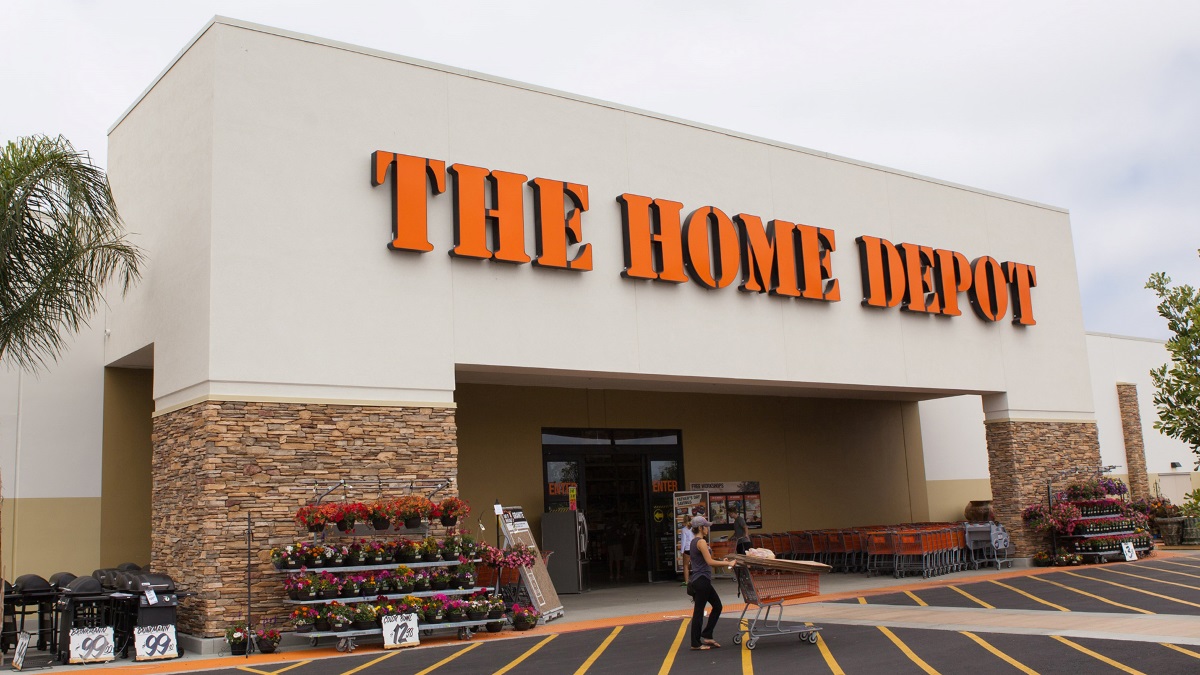

Finance
What Is The S&O Supply Chain?
Published: October 19, 2023
Discover the S&O Supply Chain and how it impacts finance. Explore the key elements that drive financial success within this strategic business framework.
(Many of the links in this article redirect to a specific reviewed product. Your purchase of these products through affiliate links helps to generate commission for LiveWell, at no extra cost. Learn more)
Table of Contents
- Introduction
- Definition of S&O Supply Chain
- Key Components of S&O Supply Chain
- Importance of an Effective S&O Supply Chain
- Benefits of Implementing S&O Supply Chain
- Challenges in Implementing S&O Supply Chain
- Best Practices for Managing S&O Supply Chain
- Case Studies of Successful S&O Supply Chain Implementation
- Future Trends in S&O Supply Chain Management
- Conclusion
Introduction
The supply chain is a crucial component of any business, ensuring the smooth flow of products and services from the point of origin to the point of consumption. In today’s rapidly evolving business landscape, supply chain management has become more complex and challenging than ever before. One particular type of supply chain that has gained significant attention in recent years is the S&O supply chain.
The S&O supply chain, also known as the Sales and Operations supply chain, is a strategic approach that aims to align sales and operations functions within an organization. By coordinating these two critical areas, companies can maximize their efficiency, optimize their resources, and improve their overall business performance.
Unlike traditional supply chain management approaches that mainly focus on cost control and operational efficiency, S&O supply chain management takes a holistic view of the entire supply chain, integrating sales forecasts, demand planning, production scheduling, and inventory management. This comprehensive approach enables businesses to align their production capacities with market demand, reduce lead times, and improve customer satisfaction.
The S&O supply chain is not limited to specific industries or business sizes. It can benefit organizations of all types, including manufacturing, retail, e-commerce, and services. By effectively implementing an S&O supply chain strategy, companies can avoid stockouts, reduce excess inventory, optimize production schedules, and ultimately enhance their bottom line.
In this article, we will delve deeper into the world of the S&O supply chain. We will explore its key components, discuss the importance of an effective S&O supply chain, highlight the benefits of implementing this approach, and examine the challenges that organizations may face when adopting it. Additionally, we will provide best practices for managing an S&O supply chain, showcase case studies of successful implementation, and discuss future trends in S&O supply chain management.
By the end of this article, you will have a solid understanding of what the S&O supply chain is, why it is important, and how it can drive business success. So, let’s dive in and explore the fascinating world of the Sales and Operations supply chain.
Definition of S&O Supply Chain
The S&O supply chain, short for Sales and Operations supply chain, is a strategic approach that integrates the sales and operations functions within an organization. It focuses on aligning the sales forecast with production planning and inventory management to ensure efficient resource utilization and customer satisfaction.
At its core, the S&O supply chain aims to bridge the gap between the demand side (sales and marketing) and the supply side (operations and production) of a company. By synchronizing these two critical areas, organizations can better anticipate customer demand, optimize production capabilities, and effectively manage inventory levels.
In a traditional supply chain, sales and operations often operate independently, leading to inefficiencies such as excess inventory or stockouts. The S&O supply chain approach strives to create a seamless flow of information and collaboration between the sales and operations teams, enabling them to make data-driven decisions and respond quickly to changes in demand.
The S&O supply chain involves several key components:
- Sales Forecasting: Accurately predicting future sales volumes and trends is paramount in the S&O supply chain. Sales forecast data, often based on historical sales data, market trends, and customer insights, serves as the foundation for production planning and inventory management.
- Production Planning: Once the sales forecast is established, production planning determines how much and when to produce to meet the projected demand. It involves optimizing production capacity, scheduling production activities, and coordinating resources to align with sales expectations.
- Inventory Management: Effective inventory management is crucial in the S&O supply chain. It involves monitoring stock levels, balancing inventory turnover, and ensuring the availability of products to meet customer demand while minimizing carrying costs and obsolescence.
- Collaboration and Communication: Successful implementation of the S&O supply chain requires robust collaboration and communication between the sales and operations teams. Information sharing, regular meetings, and shared goals are essential for achieving coordination and alignment throughout the supply chain.
By integrating these components, the S&O supply chain enables organizations to achieve a harmonious balance between sales and operations, leading to improved customer satisfaction, reduced costs, and increased profitability. With accurate sales forecasting, organizations can avoid stockouts and minimize excess inventory, resulting in optimized production schedules and enhanced overall supply chain efficiency.
In the next section, we will discuss the importance of an effective S&O supply chain and the benefits it brings to businesses.
Key Components of S&O Supply Chain
The S&O (Sales and Operations) supply chain comprises various key components that work together to ensure the seamless integration and alignment of sales and operations functions within an organization. Understanding these components is crucial for implementing an effective S&O supply chain strategy. Let’s explore the key components:
- Sales Forecasting: Accurate sales forecasting is the foundation of the S&O supply chain. It involves predicting future sales volumes, trends, and patterns based on historical data, market insights, and customer feedback. Sales forecasting helps organizations anticipate customer demand, plan production accordingly, and optimize inventory levels.
- Operations Planning: Operations planning focuses on determining the necessary resources, capacity, and production schedules to meet the forecasted demand. It involves coordinating activities such as procurement, production, distribution, and logistics. Effective operations planning ensures that the required resources are available at the right time and place to fulfill customer orders.
- Inventory Management: Inventory management is a critical component of the S&O supply chain. It involves monitoring and controlling stock levels to ensure that the right amount of inventory is available to meet customer demand. Efficient inventory management minimizes stockouts and excess inventory, reducing carrying costs and improving overall supply chain efficiency.
- Demand Management: Demand management focuses on understanding and influencing customer demand. It involves strategies to stimulate demand, such as marketing campaigns, pricing strategies, and product promotions. By effectively managing customer demand, organizations can align it with production capabilities, leading to better resource utilization and customer satisfaction.
- Collaboration and Communication: Collaboration and communication are vital for the successful implementation of the S&O supply chain. Sales and operations teams need to work closely together, sharing information, insights, and feedback. Regular communication, joint planning sessions, and alignment of goals help ensure that both teams are on the same page and can make informed decisions together.
These key components work in synergy to create a well-integrated S&O supply chain. By aligning sales forecasts with production planning, optimizing inventory levels, and fostering collaboration between sales and operations teams, organizations can achieve better customer service, increased operational efficiency, and a competitive edge in the market.
In the next section, we will explore the importance of an effective S&O supply chain for businesses.
Importance of an Effective S&O Supply Chain
An effective S&O (Sales and Operations) supply chain is of utmost importance for businesses in today’s competitive market. It provides numerous benefits and plays a crucial role in driving operational excellence, enhancing customer satisfaction, and improving overall business performance. Let’s dive into the importance of an effective S&O supply chain:
1. Demand and Supply Alignment: One of the primary benefits of an S&O supply chain is the alignment of demand and supply. By integrating sales forecasting with production planning, organizations can accurately anticipate customer demand and ensure that their production capacities are aligned accordingly. This alignment enables companies to avoid stockouts, minimize excess inventory, and reduce the risk of lost sales opportunities.
2. Improved Customer Satisfaction: An effective S&O supply chain enables businesses to meet and exceed customer expectations. By accurately forecasting demand and optimizing production schedules, organizations can ensure that products are readily available when customers need them. This leads to improved order fulfillment rates, faster delivery times, and increased customer satisfaction.
3. Enhanced Operational Efficiency: S&O supply chain management focuses on streamlining processes, reducing waste, and improving resource utilization. Through better coordination between sales and operations, organizations can optimize production capacities, reduce lead times, and minimize bottlenecks in the supply chain. This enhanced operational efficiency translates to cost savings and improved profitability.
4. Cost Reduction: An effective S&O supply chain helps organizations reduce costs in several ways. With accurate sales forecasting, companies can minimize excess inventory and associated carrying costs. Additionally, optimized production planning enables efficient use of resources, reducing production costs and improving overall cost-effectiveness. Moreover, streamlined processes and improved coordination lead to better inventory management, reducing the risk of obsolescence and associated write-offs.
5. Competitive Advantage: Implementing an effective S&O supply chain can provide organizations with a competitive advantage in the market. By delivering products faster, maintaining optimal inventory levels, and ensuring consistent customer satisfaction, businesses can differentiate themselves from competitors. This advantage can result in increased market share, customer loyalty, and sustainable business growth.
6. Agility and Adaptability: In today’s dynamic business environment, organizations need to be agile and adaptive to changing market conditions. An effective S&O supply chain provides the flexibility to quickly respond to shifts in customer demands, market trends, and supply chain disruptions. It enables businesses to make data-driven decisions, adjust production plans, and optimize inventory levels promptly.
Overall, an effective S&O supply chain is essential for businesses to achieve operational excellence, meet customer expectations, reduce costs, and gain a competitive edge in the market. It allows organizations to navigate the complexities of the modern supply chain landscape and sustain long-term success.
In the next section, we will explore in detail the specific benefits that organizations can gain from implementing an S&O supply chain strategy.
Benefits of Implementing S&O Supply Chain
Implementing an S&O (Sales and Operations) supply chain strategy can bring numerous benefits to organizations, contributing to improved operational efficiency, customer satisfaction, and overall business performance. Let’s explore the key benefits of implementing an S&O supply chain:
1. Improved Demand Forecasting: By aligning sales and operations functions, organizations can achieve more accurate demand forecasting. This enables better planning and resource allocation, reducing the risk of stockouts and improving customer service levels.
2. Optimal Inventory Management: An S&O supply chain approach helps organizations optimize inventory levels. By integrating sales forecasts with procurement and production planning, organizations can avoid excess inventory and minimize carrying costs without compromising customer satisfaction.
3. Enhanced Production Efficiency: Effective coordination between sales and operations teams enables organizations to optimize production schedules and capacities. This results in improved production efficiency, reduced lead times, and increased throughput, leading to higher productivity and cost savings.
4. Reduced Costs: Implementing an S&O supply chain strategy can lead to cost reduction in various areas. By accurately forecasting demand and aligning production capacities, organizations can reduce excess inventory carrying costs, minimize stockouts, and avoid rush production, resulting in significant cost savings.
5. Improved Customer Satisfaction: An integrated S&O supply chain ensures that the right products are available when and where customers need them. This leads to improved order fulfillment rates, faster delivery times, and better customer service, ultimately enhancing customer satisfaction and loyalty.
6. Increased Agility and Flexibility: An S&O supply chain enables organizations to respond quickly and effectively to market fluctuations, changes in customer demand, and supply chain disruptions. This agility and flexibility allow businesses to adapt to volatile market conditions and maintain a competitive edge.
7. Enhanced Collaboration: Implementing an S&O supply chain encourages collaboration and communication between sales and operations teams. This collaboration fosters a shared understanding of customer demand, a unified approach to decision-making, and improved coordination throughout the supply chain.
8. Better Strategic Decision-Making: The integration of sales and operations data in an S&O supply chain provides organizations with a holistic view of their business. This enables informed decision-making and facilitates the identification of opportunities for growth, market expansion, and process improvement.
9. Competitive Advantage: Organizations that successfully implement an S&O supply chain strategy can gain a competitive advantage in the market. By delivering products more efficiently, managing inventory effectively, and consistently meeting customer demands, businesses can differentiate themselves and attract more customers.
10. Long-term Business Sustainability: An S&O supply chain approach promotes long-term business sustainability by ensuring operational excellence, customer satisfaction, and cost optimization. It establishes a strong foundation for growth, profitability, and adaptability in an ever-changing business landscape.
By implementing an S&O supply chain strategy, organizations can reap these benefits and position themselves for long-term success in today’s competitive market.
In the next section, we will explore the potential challenges organizations may face when implementing an S&O supply chain and discuss strategies to overcome them.
Challenges in Implementing S&O Supply Chain
While implementing an S&O (Sales and Operations) supply chain strategy can bring significant benefits to organizations, there are also challenges that need to be addressed for successful implementation. Let’s discuss some common challenges that organizations may face:
1. Siloed Organizational Structure: One of the major challenges is overcoming a siloed organizational structure, where sales and operations teams operate independently. Lack of communication and collaboration between these teams can hinder the flow of information and coordination required for effective S&O supply chain management.
2. Data Accuracy and Integration: Ensuring the accuracy and integration of data from different systems and sources is crucial for an S&O supply chain. Mismatched or incomplete data can lead to inaccurate sales forecasts, inefficient resource allocation, and suboptimal decision-making.
3. Limited Technology and Infrastructure: Outdated technology and inadequate infrastructure can pose challenges in implementing an S&O supply chain. Organizations need robust systems and tools for demand forecasting, production planning, and inventory management to facilitate seamless communication and information sharing.
4. Resistance to Change: Change management is a critical aspect of implementing an S&O supply chain. Resistance to change from employees and stakeholders can hinder the adoption of new processes, technologies, and ways of working. Overcoming resistance through effective communication, training, and involvement can help mitigate this challenge.
5. Demand Variability and Uncertainty: Dealing with demand variability and uncertainty can be challenging in the S&O supply chain. Market fluctuations, seasonal demand patterns, and unexpected changes in customer preferences require organizations to be agile and flexible in adjusting production plans and inventory levels accordingly.
6. Supplier and Vendor Management: Managing relationships with suppliers and vendors is crucial for successful S&O supply chain management. Ensuring timely and reliable delivery of raw materials and components is essential to avoid disruptions in the production process and maintain optimal inventory levels.
7. Forecast Accuracy: Accurate sales forecasting is critical for effective S&O supply chain management. However, forecasting errors and inaccuracies can occur due to market uncertainties, changing customer preferences, or unforeseen events. Organizations need to continuously monitor and improve their forecasting models to minimize errors and optimize supply chain operations.
8. Cultural and Organizational Alignment: Achieving cultural and organizational alignment is vital for implementing an S&O supply chain successfully. This involves fostering collaboration, trust, and shared goals among different departments and functional areas within the organization.
Addressing these challenges is essential to ensure smooth implementation and optimized performance of an S&O supply chain. Organizations can overcome these challenges by investing in robust technology and infrastructure, fostering a culture of collaboration, providing adequate training and support to employees, and continuously monitoring and improving processes.
In the next section, we will discuss best practices for effectively managing an S&O supply chain to overcome these challenges and drive success.
Best Practices for Managing S&O Supply Chain
Effectively managing an S&O (Sales and Operations) supply chain requires a systematic approach and the implementation of best practices. By following these best practices, organizations can optimize their operations, improve collaboration between sales and operations teams, and drive overall supply chain success. Let’s explore some key best practices for managing an S&O supply chain:
1. Integrated Planning: Implement integrated planning processes that connect sales forecasting, production planning, and inventory management. This ensures alignment between demand and supply, enabling efficient resource utilization and minimizing inventory-related costs.
2. Effective Sales Forecasting: Develop accurate and reliable sales forecasting methods based on historical data, market trends, customer insights, and statistical models. Regularly revisit and refine the forecasting models to enhance accuracy and reduce forecast errors.
3. Cross-Functional Collaboration: Foster collaboration and communication between sales and operations teams. Encourage regular meetings, shared goals, and open dialogue, enabling both teams to collaborate effectively in demand planning, production scheduling, and inventory management.
4. Real-Time Data Visibility: Implement systems and tools that provide real-time visibility into sales data, inventory levels, and production status. This allows for quick decision-making and proactive management of supply chain operations.
5. Demand Sensing: Utilize advanced analytics and demand sensing technologies to capture real-time customer demand signals. Incorporate these signals into the demand planning process to enhance forecast accuracy and responsiveness to market dynamics.
6. Continuous Improvement: Continuously monitor and evaluate supply chain performance, identify areas for improvement, and implement process enhancements. Regularly assess the effectiveness of forecasting models, production planning mechanisms, and inventory management strategies.
7. Supplier Relationship Management: Develop strong relationships with suppliers and vendors to ensure timely and reliable delivery of raw materials and components. Engage in collaborative partnerships, share information, and establish mutually beneficial agreements that enhance supply chain efficiency.
8. Technology Integration: Invest in integrated supply chain management systems that provide end-to-end visibility and enable seamless data sharing between departments. Leverage automation, artificial intelligence, and machine learning technologies to improve demand forecasting accuracy, optimize production planning, and streamline inventory management.
9. Performance Metrics and KPIs: Define and monitor key performance indicators (KPIs) that provide insights into the effectiveness of the S&O supply chain. Measure metrics such as forecast accuracy, inventory turnover, order fulfillment rate, and customer satisfaction to gauge performance and identify areas for improvement.
10. Collaboration with Customers and Suppliers: Extend collaboration beyond internal teams and build strong partnerships with customers and suppliers. Engage in joint forecasting, collaborative planning, and shared information exchange to enhance visibility, responsiveness, and mutually beneficial outcomes throughout the supply chain.
By implementing these best practices, organizations can optimize their S&O supply chain operations, enhance customer satisfaction, reduce costs, and gain a competitive advantage in the market.
In the next section, we will explore real-life case studies of successful implementations of the S&O supply chain.
Case Studies of Successful S&O Supply Chain Implementation
The successful implementation of an S&O (Sales and Operations) supply chain can significantly transform a company’s operations, leading to improved efficiency, customer satisfaction, and overall business performance. Let’s explore two case studies highlighting the successful implementation of the S&O supply chain:
Case Study 1: Company A – Consumer Electronics Manufacturer
Company A, a global consumer electronics manufacturer, faced challenges in balancing production capacities with fluctuating customer demand. By implementing an S&O supply chain strategy, the company aimed to optimize its operations and improve forecast accuracy.
Through collaborative efforts between sales and operations teams, Company A integrated sales forecasting, production planning, and inventory management processes. They implemented advanced demand sensing technologies to capture real-time customer demand signals, enhancing forecast accuracy and responsiveness.
The implementation of the S&O supply chain resulted in significant improvements. Company A experienced a 25% reduction in stockouts, leading to increased customer satisfaction and improved order fulfillment rates. The optimized production planning reduced lead times by 20%, enabling the company to respond quickly to changing market demands. As a result, Company A achieved a 15% increase in overall operational efficiency and a 10% reduction in production costs.
Case Study 2: Company B – Pharmaceutical Manufacturer
Company B, a leading pharmaceutical manufacturer, recognized the need for better coordination between its sales and operations functions to meet growing customer demands. They embarked on implementing an S&O supply chain to optimize production planning and inventory management.
By integrating demand forecasting, production planning, and inventory management, Company B improved its supply chain agility and adaptability. They implemented advanced analytics tools to track inventory levels, monitor demand patterns, and align production capacities accordingly.
The successful implementation of the S&O supply chain led to significant improvements for Company B. They achieved a 30% reduction in excess inventory, allowing for better cash flow management and reduced carrying costs. The improved production planning increased overall productivity by 20%, resulting in shorter lead times and faster order fulfillment. Additionally, the optimized inventory management led to a 15% improvement in on-time delivery and enhanced customer satisfaction.
These case studies demonstrate the tangible benefits of implementing an S&O supply chain strategy. By aligning sales forecasts with production planning, integrating data and processes, and fostering collaboration, companies can achieve remarkable improvements in operational efficiency, cost reduction, and customer satisfaction.
In the next section, we will explore the future trends in S&O supply chain management.
Future Trends in S&O Supply Chain Management
The world of supply chain management is continuously evolving, driven by advancements in technology, changing customer expectations, and global market dynamics. As organizations strive to stay competitive and efficient, several future trends are shaping the landscape of S&O (Sales and Operations) supply chain management. Let’s explore some of these trends:
1. Advanced Analytics and Artificial Intelligence: The future of S&O supply chain management lies in leveraging advanced analytics and artificial intelligence (AI). These technologies enable organizations to analyze vast amounts of data, identify patterns, predict demand, optimize production planning, and make informed decisions in real time. With AI-powered forecasting models and machine learning algorithms, organizations can enhance the accuracy and agility of their S&O supply chain.
2. Demand Sensing and Demand-Driven Operations: Demand sensing technologies continue to evolve, enabling businesses to capture real-time customer demand signals more effectively. By integrating demand sensing into the S&O supply chain, organizations can respond quickly and proactively to market shifts, optimize production capacities, and reduce lead times. This trend promotes demand-driven operations, where companies align their operations based on actual customer demand.
3. Internet of Things (IoT) and Supply Chain Connectivity: The IoT is revolutionizing supply chain management by connecting various devices, sensors, and systems along the supply chain. This connectivity enables real-time tracking of products, inventory monitoring, and predictive maintenance. With IoT-enabled devices, organizations can gain end-to-end visibility, enhance traceability, and improve supply chain efficiency in the S&O domain.
4. Sustainability and Green Supply Chain: The focus on sustainability and environmental consciousness is driving the evolution of supply chain practices. In the S&O supply chain, organizations are adopting sustainable practices, such as reducing carbon emissions, optimizing transportation routes, and incorporating environmentally friendly production methods. By incorporating sustainability into their operations, companies can meet consumer demands, comply with regulations, and contribute to a greener future.
5. Supply Chain Digitization and Automation: The digitization and automation of supply chain processes continue to transform the S&O supply chain. Organizations are digitizing manual processes, implementing robotic process automation (RPA), and utilizing blockchain technology for secure and transparent transactions. This trend increases efficiency, reduces errors, and enhances collaboration among stakeholders in the supply chain.
6. Supply Chain Resilience and Risk Management: The global uncertainties experienced in recent years have highlighted the importance of supply chain resilience and risk management. In the S&O supply chain, organizations are focusing on building agile and adaptable operations, diversifying supplier networks, and implementing robust risk management strategies. This trend ensures business continuity, mitigates disruptions, and enhances supply chain stability.
7. Omni-channel Integration: With the rise of e-commerce and the increasing expectations of seamless customer experiences, omni-channel integration is becoming vital in the S&O supply chain. Organizations are integrating their online and offline sales channels, optimizing inventory management across different channels, and enhancing customer order fulfillment capabilities. This trend enables businesses to meet customer demands and deliver a consistent experience across all sales touchpoints.
These future trends in S&O supply chain management present both opportunities and challenges for organizations. By embracing technological advancements, focusing on sustainability, and adopting agile practices, companies can stay ahead of the curve and drive competitive advantage in an ever-evolving business landscape.
In the final section, we will conclude our exploration of the S&O supply chain and summarize its importance in achieving business success.
Conclusion
The S&O (Sales and Operations) supply chain is a strategic approach that integrates sales and operations functions within an organization. It focuses on aligning demand forecasting with production planning and inventory management to optimize resource utilization, enhance customer satisfaction, and drive overall business success.
In this article, we explored the key components of an S&O supply chain, including sales forecasting, production planning, inventory management, and collaboration between sales and operations teams. We discussed the importance of implementing an effective S&O supply chain, highlighting benefits such as improved demand and supply alignment, enhanced customer satisfaction, increased operational efficiency, and reduced costs.
We also examined the challenges organizations may face when implementing an S&O supply chain, such as overcoming a siloed organizational structure, ensuring data accuracy and integration, and addressing resistance to change. To navigate these challenges, we discussed best practices, including integrated planning, effective sales forecasting, cross-functional collaboration, technology integration, and continuous improvement.
Furthermore, we explored case studies illustrating successful implementations of the S&O supply chain, showcasing real-world examples of companies achieving significant improvements in customer satisfaction, operational efficiency, and cost reduction.
We also discussed future trends in S&O supply chain management, including the adoption of advanced analytics and artificial intelligence, demand sensing, IoT and supply chain connectivity, sustainability practices, supply chain digitization and automation, supply chain resilience and risk management, and omni-channel integration.
In conclusion, an effective S&O supply chain is crucial for organizations to thrive in today’s dynamic business environment. By aligning sales and operations, optimizing production capacities, and ensuring customer-centric operations, organizations can achieve operational excellence, reduce costs, enhance customer satisfaction, and gain a competitive advantage. As supply chain practices continue to evolve, embracing the future trends discussed in this article will further enable organizations to stay ahead and drive success in their S&O supply chain efforts.














